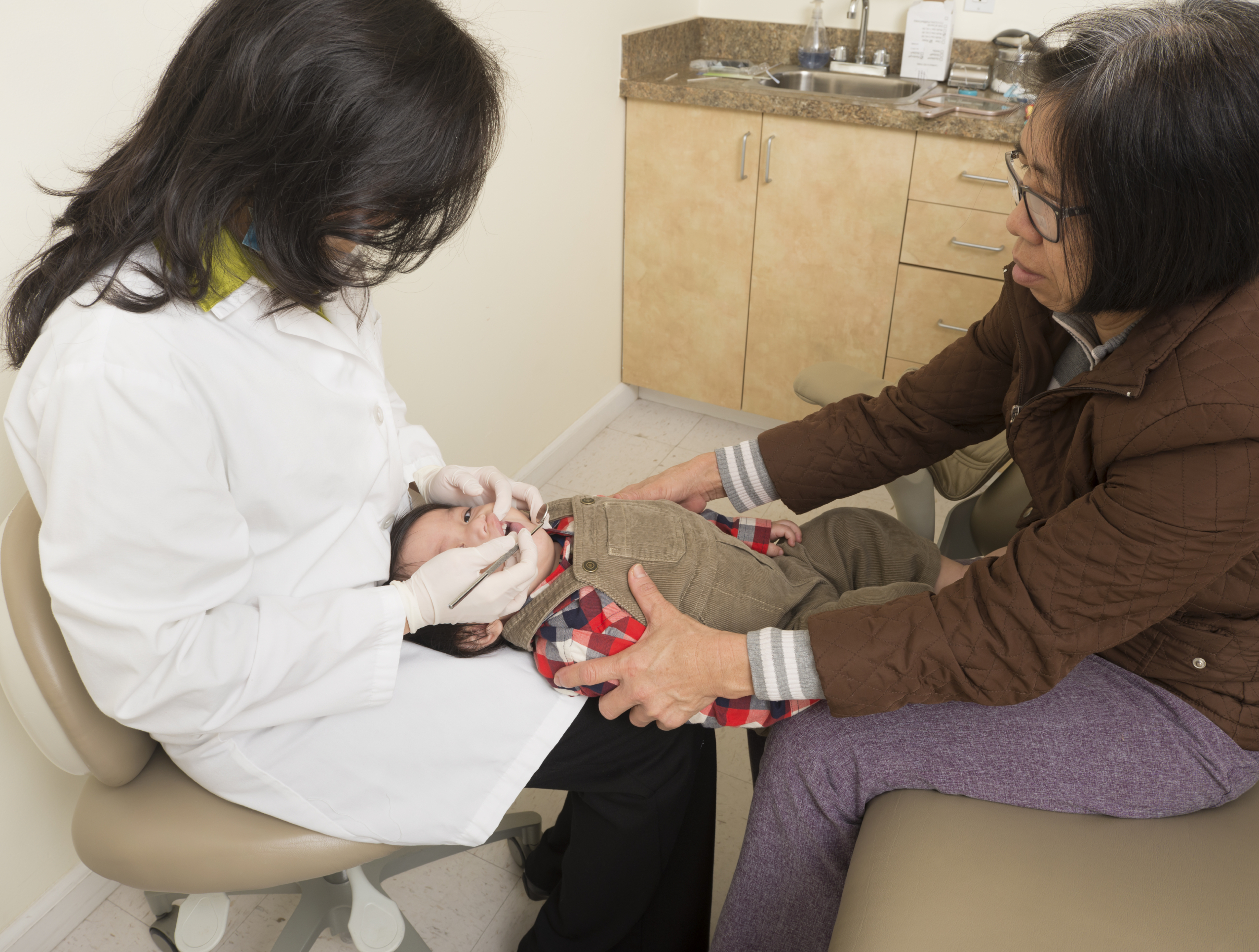 Many oral health issues that infants and toddlers experience are the same as those that affect older children. However, some issues highlight infants’ and toddlers’ dependence on adults to maintain their oral health. Issues that affect their oral health include:
Many oral health issues that infants and toddlers experience are the same as those that affect older children. However, some issues highlight infants’ and toddlers’ dependence on adults to maintain their oral health. Issues that affect their oral health include:
- Acquiring bacteria that cause tooth decay. Infants can develop tooth decay as soon as the first tooth appears in their mouth. Generally, infants are not born with the bacteria that cause tooth decay. Bacteria are usually acquired from the infant’s family or other primary caregivers. Saliva-sharing practices such as testing the temperature of a bottle by mouth, cleaning a pacifier by mouth, or sharing utensils are common ways that bacteria are passed from the family or other primary caregiver to the child. The earlier an infant acquires these bacteria, the more likely it is that the infant will develop tooth decay in their primary teeth.
- Engaging in non-nutritive sucking. Many infants and toddlers suck their thumbs, fingers, hands, a pacifier, or another object such as a blanket or toy. Sucking is a normal reflex that helps infants and toddlers feel secure and happy. Most children stop sucking between ages 2 and 4. Children who continue to use a pacifier or suck their thumbs or fingers after age 4 may need help to stop.
- Sleeping with a bottle or sippy cup. When infants and toddlers are put to sleep with a bottle or sippy cup containing breast milk, infant formula, or any liquid with natural or added sugar, their teeth are bathed in acid for long periods of time. The acid has more time to break tooth surfaces down and create tooth decay.
- Teething. Most infants begin teething around age 6 months, but teething can start any time between ages 3 and 12 months. As the primary teeth come into the mouth, infants may feel pain from the tooth pushing through the gum. Infants who are teething may become cranky, drool more, have red and swollen spots on their gums, and chew on things more frequently.
- Needing support to brush teeth. Infants and toddlers lack the dexterity to brush their own teeth effectively. This puts them at high risk for developing tooth decay because they cannot remove all of the food particles and the bacteria that cause tooth decay from their teeth.
- Visiting the dental office or clinic by age 1. A dental visit by age 1 is recommended for all infants. During the visit, the dentist checks an infant’s mouth and jaws and looks for signs of tooth decay or other problems that may affect the infant’s oral health. In addition, the dentist will answer families’ questions about their infant’s oral health. Going to the dental office or clinic at a young age helps children become accustomed to visiting the dental office or clinic and receiving care.
- Supporting children with a disability. Children with a physical or developmental disability, including children with sensory processing differences, have a higher risk for developing tooth decay and other oral diseases or problems than children without a disability. Maintaining good oral health is a challenge for some children with a disability because of limited access to care and competing demands, such as other health and social support needs. Access to oral health care may be a challenge if the family does not have dental insurance, has inadequate dental insurance, or has difficulty finding a dentist who is comfortable providing care for children with a disability.
Tips and Strategies Related to Oral Health for Infants and Toddlers
- Help families identify oral health professionals that will see children by age 1, and help facilitate the age 1 dental visit, as needed. For example, explain what will happen during the dental visit and how to prepare children for dental visits.
- Brush infants’ teeth with a rice-size amount of fluoride toothpaste at least once during the program day as soon as the first tooth appears in the mouth, and encourage families to do the same before putting the child to sleep at night.
- Help families establish a bedtime routine for their child that includes toothbrushing.
- Provide group and individual training and technical assistance (TTA) to staff and families that addresses the following:
- Not putting infants or toddlers to sleep with a bottle filled with breast milk, infant formula, juice, or other drinks with sugar.
- Not using their mouths to test the temperature of milk in bottles or to clean a pacifier, and not sharing utensils.
- Comforting infants who are teething by giving them a cool teething ring, cool spoon, or a cold, wet washcloth.
- Advising families on the selection, care, and use of pacifiers, as well as on ways to wean a child from the pacifier if the child is still using one after age 4.
- Help improve the oral health of a child with disabilities by:
- Learning more about the child’s disability and its impact on oral health.
- Giving the child with a disability extra support in the classroom.
- Helping families understand that their child’s disability may increase the child’s risk for developing tooth decay.
- Identifying oral health professionals in the community who will provide care for children with disabilities.
- Identifying partners (e.g., occupational therapists, physical therapists) to help families with a child with disabilities access care and adapt oral hygiene practices.
Learn More
Read more:
Resource Type: Article
National Centers: Health, Behavioral Health, and Safety
Age Group: Infants and Toddlers
Last Updated: September 14, 2023